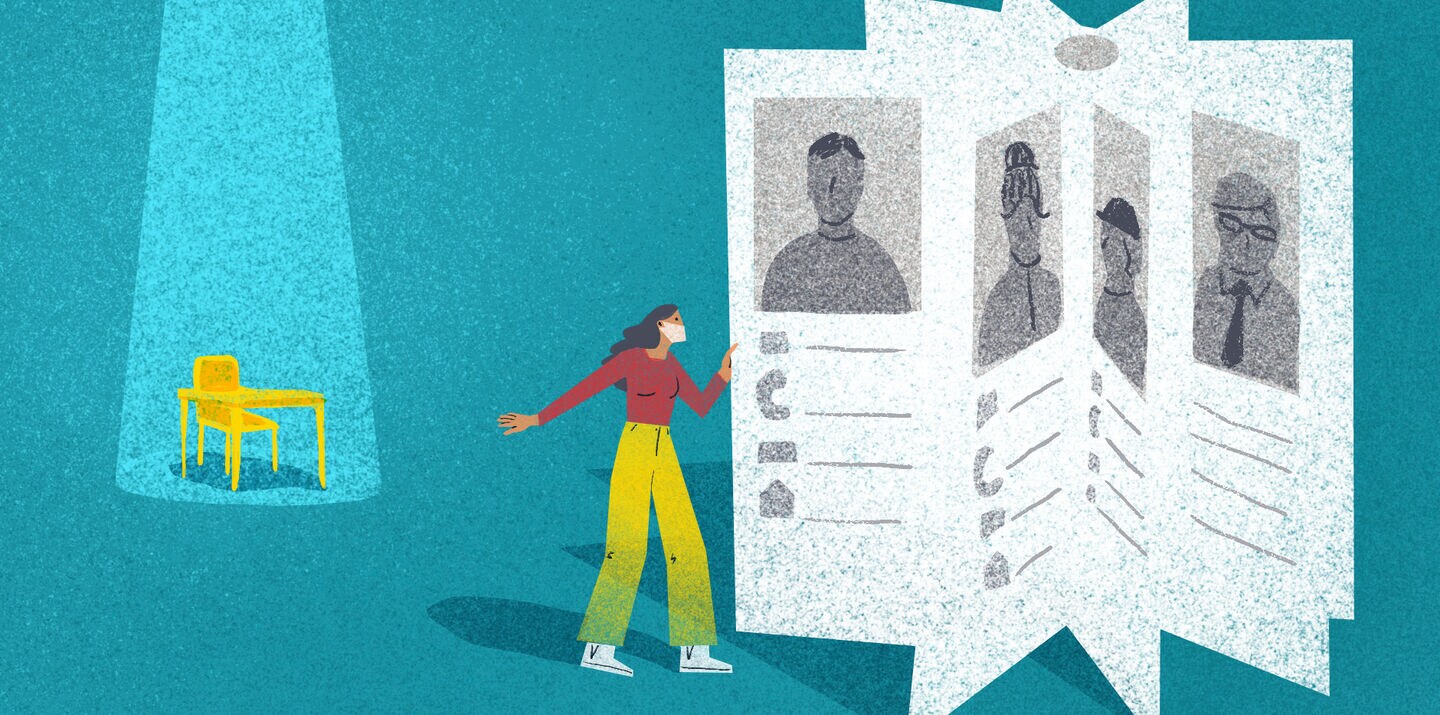
How to Track Down a Missing Student
Sky-high rates of absenteeism demand detective skills and a stacked Rolodex.
This story is the first in a series of pieces answering questions about how to return to in-person learning and how to do schooling differently—and better—post-pandemic. To source the questions, we spoke with dozens of educators, caregivers, and students. We are grateful for their curiosity and, despite all, their optimism.
Students are missing from schools in numbers far surpassing pre-pandemic rates of absenteeism. A report from the Ohio Department of Education, for example, found that 51% of high school students in a sampling of the state’s urban districts have been chronically absent in 2020-21, an 11-point increase over the previous school year.
But even the kids who don’t want to be found probably haven’t vanished, says Jamaal Crawford, the Midwest regional director for Youth Advocate Programs, Inc., a national nonprofit providing community-based supports for young people as an alternative to institutions like juvenile detention, or when they transition back home. Kids are social by design, so if you can’t find them, find their people. “A coach, a counselor, a neighborhood friend, a significant other, whomever has been beneficial in a kid’s life,” Crawford says. “Build a list of people to go to.”
And be a pest. Crawford recalls a resistant student on his caseload several years ago. “His bus came at 6:35 a.m. So I’d call him at 5:30. ‘You up?’ Then I’d call him at 6. ‘You moving around?’ Then I’d call the school. ‘Has he showed up?’” Eventually, the student started ignoring Crawford’s calls, so Crawford started showing up outside his house.
States and school districts have proved unprepared to track the impact of the pandemic on attendance. But researchers at the nonprofit Bellwether Education Partners looked specifically at fall attendance figures for marginalized students—multilingual learners, students with disabilities or special needs, and those in foster care or experiencing homelessness—and estimated more than 3 million of them experienced minimal to no education since March 2020.
Abi McDougal (Greater Delta ’18) teaches second grade in Hollandale, Mississippi, where her school year has whiplashed between in-person and virtual learning. Knowing students’ networks is key, she says: “It becomes a mix of asking the cousin, asking the aunt, asking the friend, ‘Have you talked to so-and-so?’” The rest is a dance—inquiring about attendance without sounding threatening; asking for extra contact information without crossing personal bounds; building trust with caregivers so that when McDougal does reach out, it’s with an understanding that everyone is doing their best amid the circumstances.
“When I do make contact with someone who’s been difficult to track down, my ask of that person tends to be really, really low,” McDougal says. “Like, ‘Can I drop off some supplies?’ And then, later, ‘We’ll be doing this activity with those supplies I dropped off. Could your student make it online today?’”
There will always be some students, Crawford says, who are managing crises. For them, a knock at the door and a pep talk will never be enough. “Some kids are already so far behind in school they’re not trying to invest in getting a diploma, so it’s about finding their motivation, whatever that is.” And some kids disappear to avoid harm. Then, it can become a scary waiting game, he says. “Sometimes they’ll reach out after a few days just to say, ‘I’m OK.’ I’ll take that. And hopefully, the kid will eventually let me know where he is.”
Sign up to receive articles like this in your inbox!
Thanks for signing up!
Content is loading...


